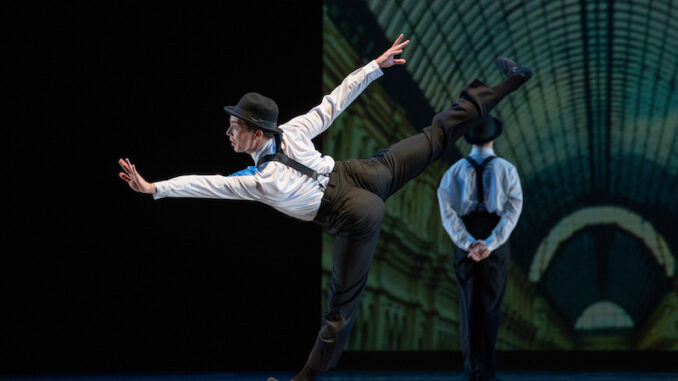
By Bette Kiernan and Bart Anderson
In a dark time perhaps what we need is cautious optimism, a reminder that in spite of COVID life goes on. That’s what the San Francisco Ballet offers us in their current production (Program 5, April 2–16).
The featured piece is the world premiere of “Harmony,” a parting gift by outgoing Artistic Director Helgi Tomasson. Harmony is Helgi Tomasson’s last ballet before his retirement in June. After COVID struck, SF Ballet dancers had practiced separately for months in their homes. In the fall of 2020, they returned to their studios. To minimize the risk of transmission they were organized into four separate “pods.” Three were assigned a choreographer. When Tomasson realized that one pod was left unanchored, he took over the group to give them the nurturance for which they longed after their months in solitude.

The work is a jubilant celebration of dance and dancers. The ballet opens on a darkened stage wherein twelve dancers emerge from the shadows into a ray of light. “To me, that signified the COVID world that we’re hopefully going to come out of,” explained Tomasson. “I felt once we do, we will celebrate.” The happy celebrations of this dance signify the transformation of darkness to light through a series of linked solos, duets and group dancing by the entire cast.
Tommason’s choreography showcased each dancer’s special talents. By combining their skills the collaborative effort becomes a powerful force.
The title of this ballet is personal to Tommason. “Harmony” is a reference to the challenges of navigating dark days, and “finding a certain harmony and peace within oneself in the horrible time we were living through.”
The ballet provides a model for navigating our darkened times: climate change, epidemics, wars, political discord and wealth discrepancies. One needs to look within the self to find the sources of balance and harmony and subsequently bring these to others in the outside world. In that way light may be urged out of darkness by each individual rather than through an external source of power.
The costumes were of special interest. Swirling full skirts with red and gold under skirting enhanced the feeling of flow and return to natural movement after the constricted life during COVID. The varied shades of blue of the fabric matched the blue stage of transformation, according to alchemy. For alchemists, blue meant healing. Taken as part of the overall work, the color blue punctuated Tomasson’s intent to bring new Harmony, relieving the strictures of COVID. The red and gold reflecting the earlier stage of anger and forward looking goal of ultimate golden transformation depicted in the alchemical stages were also represented, showing our symbolic progression from the darkness towards attainment of light.
Perhaps a key to understanding the work is Tomasson’s statement that it “does not have a story per se; it’s more the emotion and feeling of the music that I’m going with … I find the music tells me what I need to do, what steps I have to create.” Alchemy and nature’s cyclical changes alike happen without a narrative; rather they tell the deeper story of the ways in which all things happen, move and change.
The music, similar to the healing colors of costumes, also brings the gifts of harmony to audience members through use of melodic happy sound. For “Harmony”, the music he chose was a Baroque harpsichord piece from the 1700s, “Pièces de clavecin” by Jean-Phillips Rameau. Tomasson finds in it both similarities to Bach and occasional sections which feel contemporary.
The Fifth Season
The other ballet by Tomasson in the program was also inspired by music that defies easy categorization. “The Fifth Season” is a suite of six movements set to the music of Karl Jenkins. Modernist, but with melody and a feeling of romanticism is how Tomasson describes it.
Originally performed in 2005, “The Fifth Season” elicited enthusiastic applause after each bravura performance. Even someone unaccustomed to ballet felt chills go down his spine.
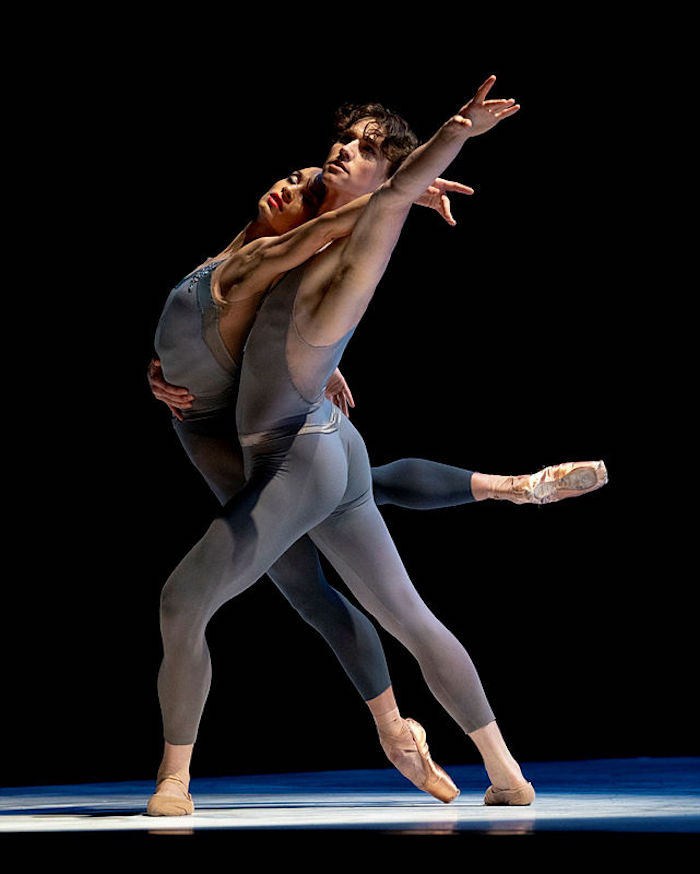
Tomasson Performed first Magrittomania
The concluding ballet, “Magrittomania,” was satisfying for those who respond to ballets with a definite story or theme. Created by choreographer Yuri Possokhov in 2000, “Magrittomania” is a rollicking, light-hearted piece based on the works of the French Surrealist René Magritte.
It opens with a full-screen projection of gentlemen in bowler hats falling down through the sky like raindrops. Woven into the production are Magritte’s trademark images of green apples, doves, bowler hats, and lovers wearing shrouds over their heads. All of these images honor that which is bizarre.
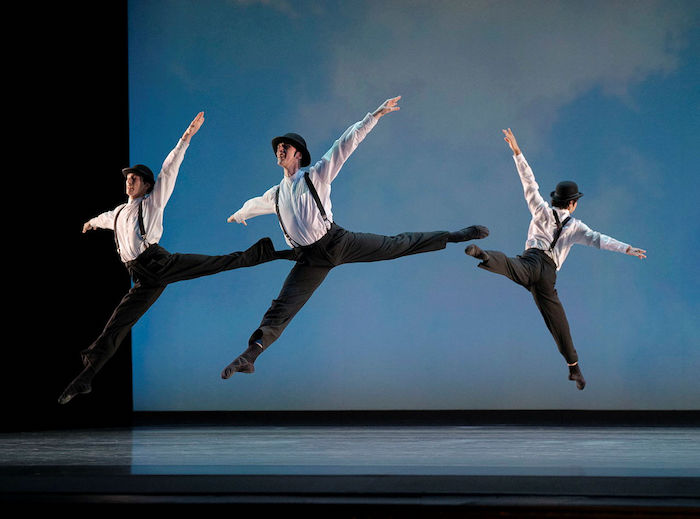
A man in a bowler hat searches on the darkened stage with a flashlight. He finally discovers a woman in a brilliant red dress. They dance together, sometimes with shrouds over their heads, sometimes not. Others join them, sometimes rolling around on the floor, sometimes in acrobatics. Does it make rational sense? Of course not – this is surrealism! For some reason though it is gently uplifting.
The music matches the mood, with familiar classical pieces like Beethoven’s Für Elise arranged imaginatively to be fresh and humorous.

Possokhov’s rare gift is his unique ability to bring the symbols Magritte created from dreams into a ballet which is both powerful and joyful.
Bowler hats off to both Magritte and Possokhov for their respective rare talents which bring symbols into enlivening experiences.
Photos are courtesy of San Francisco Ballet
For more information about San Francisco Ballet

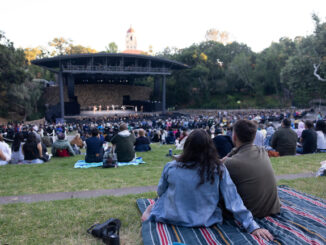

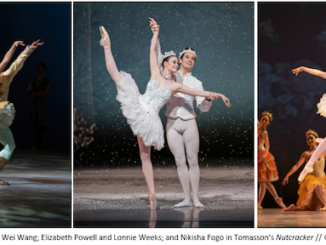
Be the first to comment